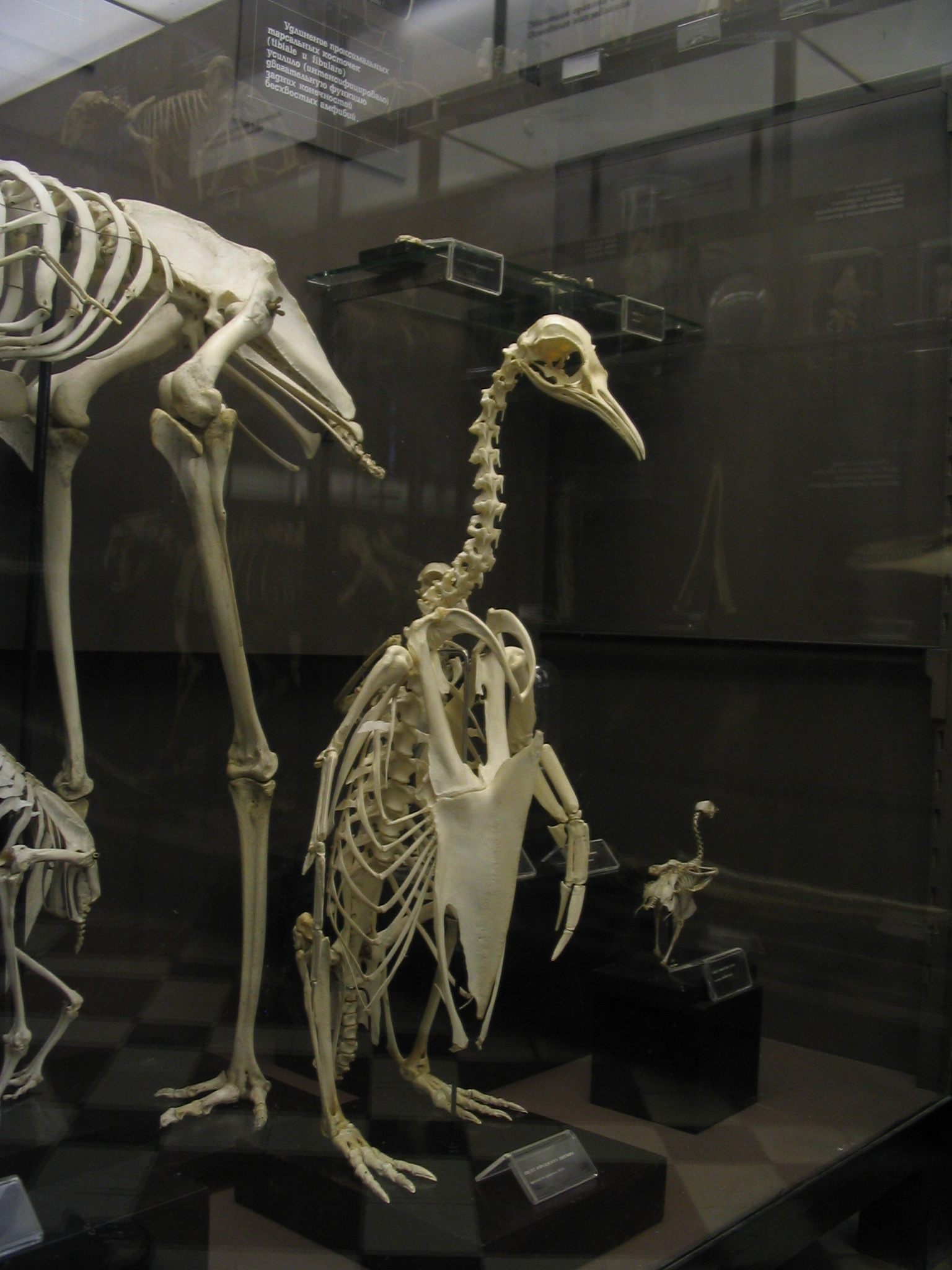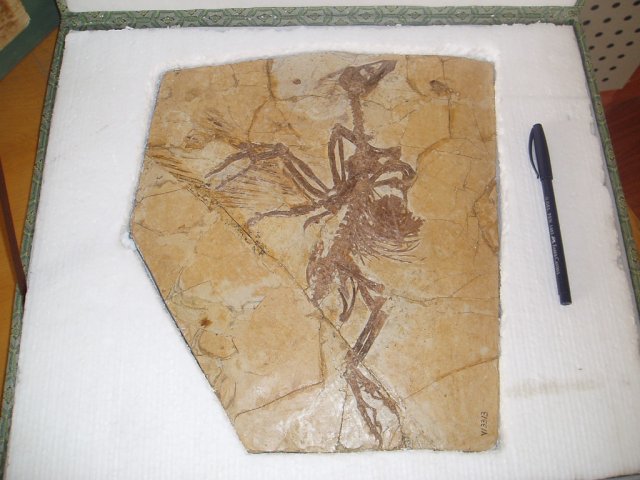Master thesis proposal 2010-2011
Morphable model of bird skeleton meshes
 |
 |
| A real penguin skeleton (courtesy Wikimedia Commons) | A bird fossil (courtesy Pauline Provini) |
Advisors
| Franck Hétroy | Lionel Revéret |
| LJK/EVASION | LJK/EVASION |
| E-mail: Franck.Hetroy@grenoble-inp.fr | E-mail: Lionel.Reveret@inria.fr |
| Tel. : 04 76 61 55 04 | Tel. : 04 76 61 52 36 |
Context
Researchers in evolutionary biology of the Museum National d'Histoire Naturelle in Paris (especially Pauline Provini, UMR 7179 lab, MorphoMotion team) try to understand the origin of bird flight by analyzing the evolution of bird morphology and motions. Unfortunately, available fossils are often incomplete (bones are missing). This makes the guess of both the complete morphology (especially the muscles) and the motions very difficult. Thus, an anatomical analysis of current birds is first required. In particular, a morphable model of bird morphology needs to be constructed from a set of bird skeletons. This is the goal of the proposed Master subject.
Objectives
Morphable models have already been proposed for faces [BV99], body shapes [ACP03] or quadruped animation skeletons [RFDC05]. In our case, we have at our disposal four 3D meshes of bird skeletal structures (duck, penguin, quail, zebra finch), with anatomical labels. These meshes have been constructed from CT scans of real bird skeletons. Our aim is to develop a morphable model based on these reference meshes. One major difficulty we face is the heterogeneity of this input data. In particular, all meshes do not have the same size. However, we also have semantic information available (the anatomical labels).
During this Master project, the student will have to work on the following points:
- draw a careful review of related work. This includes the three previously cited papers, but also their follow-ups;
- investigate possible solutions for the generation of a morphable model of bird skeleton meshes, including template morphing [GRP10], dimensionality reduction and manifold learning techniques [RS00,TSL00,BN01], shape distances [Mem09], and voting methods for shape correspondence [LF09,ATCOZF10] combined with recent formulations of barycentric coordinates [LRF10,Rus10];
- develop an original method for the proposed problem.
Pre-requisites
Required skills include computer graphics techniques, linear algebra, numerical analysis and statistics. Technical skills include C++ and OpenGL programming. Interest for birds and/or biology will be a plus.
Keywords: bird, morphology, morphing, mesh, shape matching.
References
- [ACP03] B. Allen, B. Curless, Z. Popovic. The space of all body shapes: reconstruction and parameterization from range scans. ACM Transactions on Graphics (Proceedings of SIGGRAPH), 2003.
- [ATCOZF10] O. K.-C. Au, C.-L. Tai, D. Cohen-Or, Y. Zheng, H. Fu. Electors voting for fast automatic shape correspondence. Computer Graphics Forum (Proceedings of Eurographics), 2010.
- [BN01] M. Belkin, P. Niyogi. Laplacian eigenmaps and spectral techniques for embedding and clustering. NIPS, 2001.
- [BV99] V. Blanz, T. Vetter. A morphable model for the synthesis of 3D faces. SIGGRAPH, 1999.
- [GRP10] B. Gilles, L. Revéret, D.K. Pai. Creating and animating subject-specific anatomical models. Computer Graphics Forum, 2010.
- [LF09] Y. Lipman, T. Funkhouser. Möbius voting for surface correspondence. ACM Transactions on Graphics (Proceedings of SIGGRAPH), 2009.
- [LRF10] Y. Lipman, R. Rustamov, T. Funkhouser. Biharmonic distance. ACM Transactions on Graphics, 2010.
- [Mem09] F. Mémoli. Spectral Gromov-Wasserstein Distances for Shape Matching. NORDIA, 2009.
- [RFDC05] L. Revéret, L. Favreau, C. Depraz, M.-P. Cani. Morphable model of quadrupeds skeletons for animating 3D animals. Symposium on Computer Animation, 2005.
- [RS00] S.T. Roweis, L.K. Saul. Nonlinear dimensionality reduction by locally linear embedding. Science, 2000.
- [Rus10] R. Rustamov. Barycentric coordinates on surfaces. Computer Graphics Forum (Proceedings of Symposium on Geometry Processing), 2010.
- [TSL00] J.B. Tenenbaum, V. de Silva, J.C. Langford. A global geometric framework for nonlinear dimensionality reduction. Science, 2000.